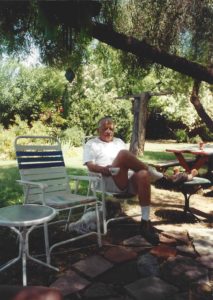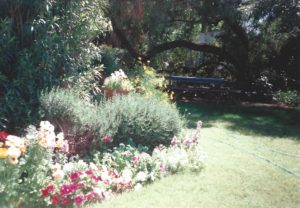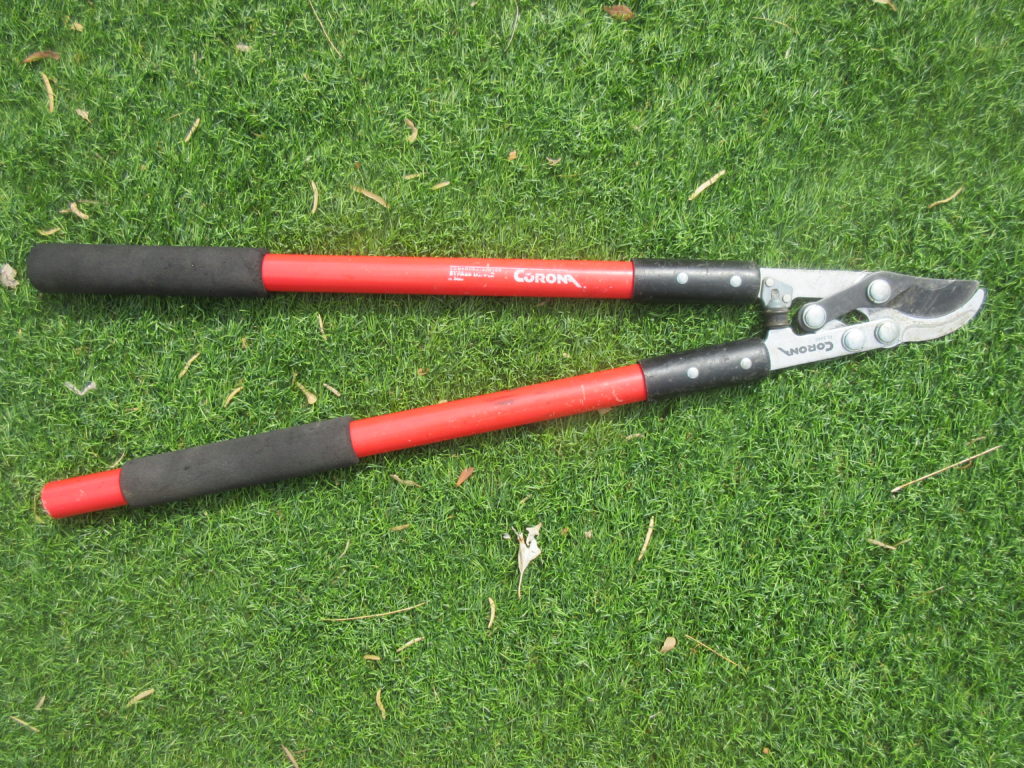
We got to use loppers. Chomping the moist flesh of African Sumac shoots had a satisfaction all its own. Weighing choices of which branches need to go and which should grow – that felt big. The tree was big, its two main limbs easily holding 3 of us cousins. The rough bark steadied our hold as we shimmied, stepped, sat, or straddled. Wispy leaves shrouded us slightly from our families below. Leaves became dolls, crowns, brooms. An overabundance of leaves, of branches, of growth, impeded our climbs and crowded the house we called ours. So we pinched off the newest shoots, feeling sticky with fluorescent green tree juice and sure in our work. And Granny lent us her loppers, the prize tool, for the older growth. We were blissfully recruited into trimming her tree.
Were it not for the weedy nature of that African Sumac tree, I may not have grown to love tending my landscape. I love weeds for nudging me to pay attention, be diligent, get outside. I love weeds for not being tidy, for giving me satisfying work to do. As a young teenager, I played regularly in a giant weed. It fed my imagination, my connection with my cousins, my pride in literally reaching new heights.
In 9th grade biology, I picked African Sumac about which to write a report on a favorite plant. The source available to me may have been a book about Arizona plants, or about North American landscape trees. It did not, I discovered, include my favorite tree. I switched subjects to a houseplant I admired instead. In which book might I locate African Sumac now? Of all my own plant books, of natives and not, I only find brief mention of my former favorite in a Sunset guide. The on-line resources I now have at my fingertips would have both satisfied my research and surprised my naïve enjoyment: objective database listings and recommendations for this easily grown shade tree, as well as admonitions against this invasive non-native: a plant to not plant, a plant to contend with.

Weeds come in all sizes and forms, as do children’s relationships with the outdoors. The hours upon months upon years I spent in my grandparents’ yard in central Phoenix, combined with the trusting relationships fostered there, helped me love stewardship of natural places. My own adult yard looks nothing like that green paradise – xeriscaped not irrigated, wildflowers not rose gardens. It’s a product of a different city, a different time, and different choices. But it has ample places for my kids to play and come up with their own favorite features. Some days they adopt brittlebush seedlings, and other days they beat back brittlebush armies with light sabers. And I enjoy pulling weeds within earshot of their imaginings.


